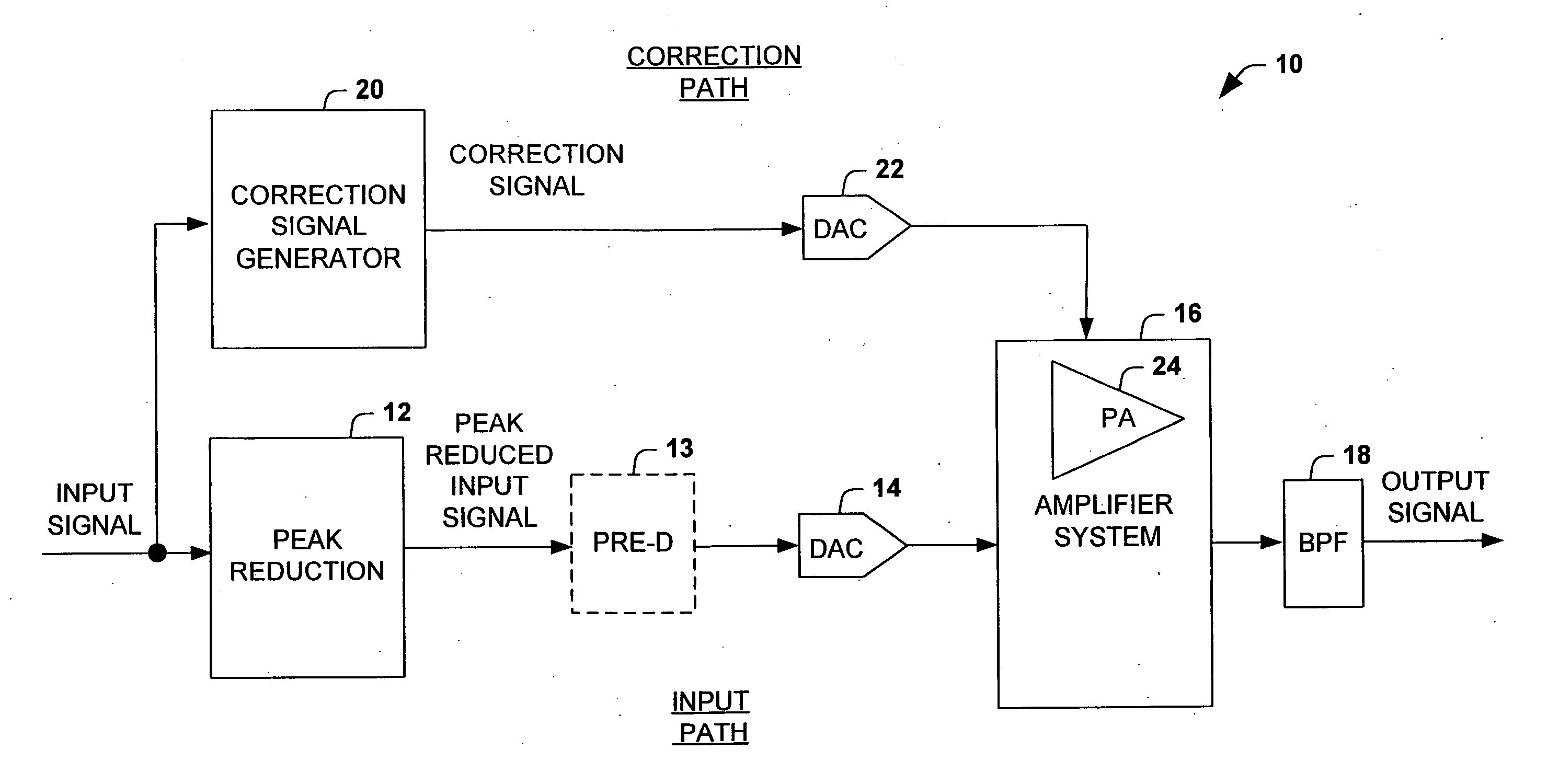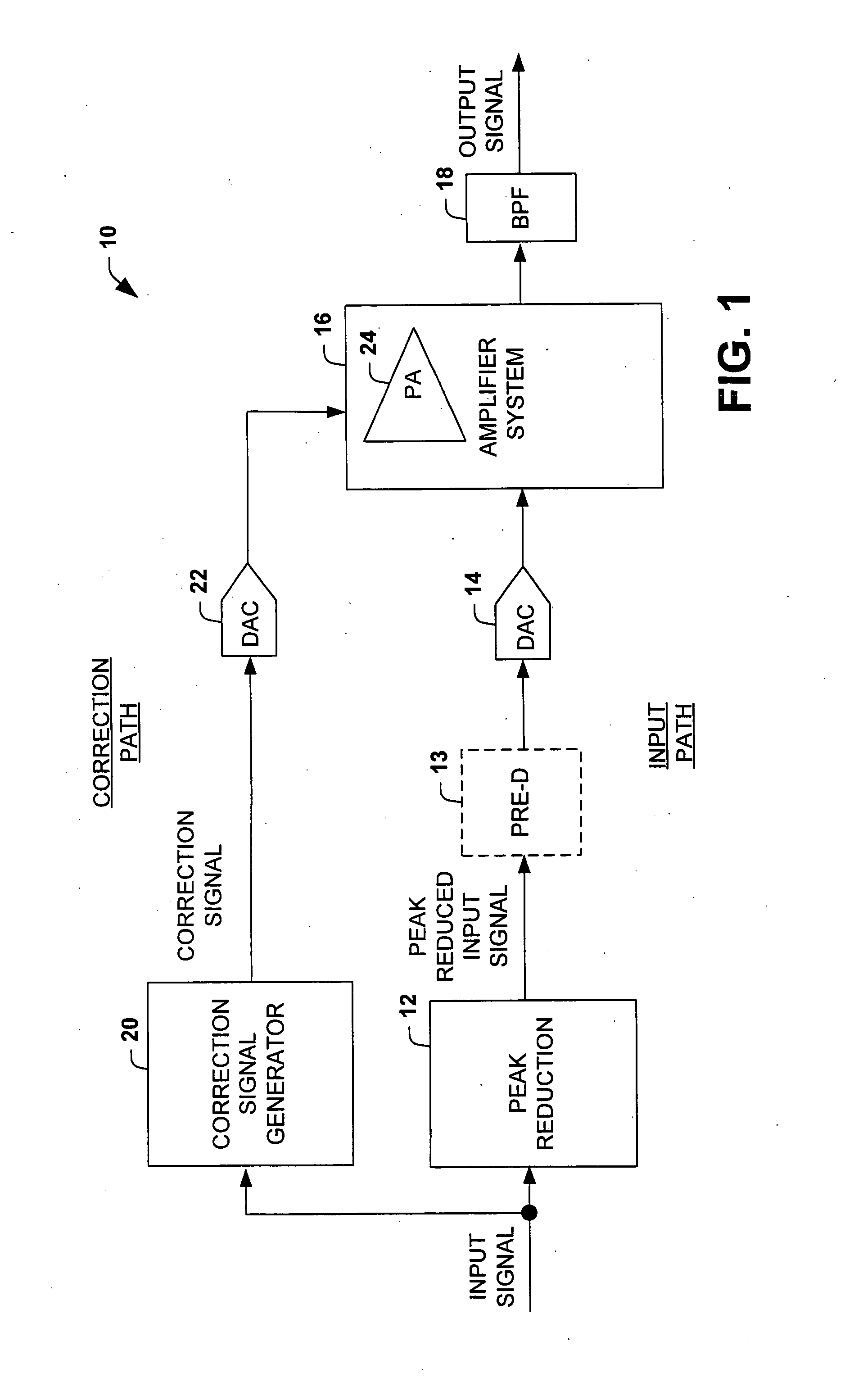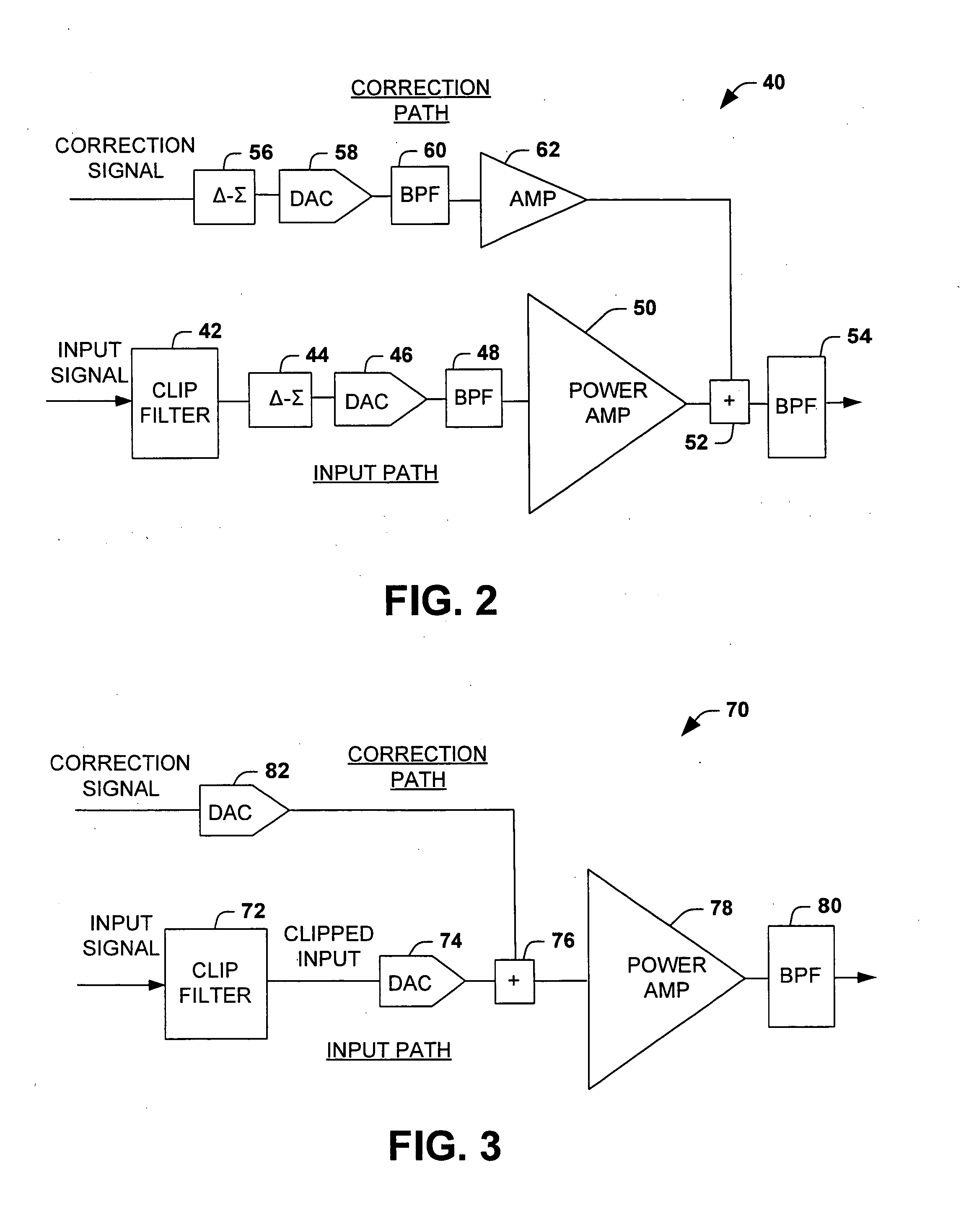System and method for reducing dynamic range and improving linearity in an amplication system
a linear amplifier and dynamic range technology, applied in the field of electronic devices, can solve the problems of inefficient linear amplifier operation in these types of signals, general non-operational high efficiency, and additional challenges, and achieve the effect of reducing peaks, reducing peak signals, and reducing peaks associated
- Summary
- Abstract
- Description
- Claims
- Application Information
AI Technical Summary
Benefits of technology
Problems solved by technology
Method used
Image
Examples
Embodiment Construction
[0023] The present invention relates to an amplification system and method that reduces distortion and / or OOB emissions in amplifier systems such as those resulting from the clipping of peaks associated with an input signal. The system and method provide one or more corrections to the reduced peak signal associated with signal distortion and OOB emissions that result from the peak reduction. Therefore, smaller (less power capacity) and less costly power amplifiers can be employed to achieve similar performance. A second result is improved amplifier system efficiency as compared to amplifier systems with much larger less efficient power amplifiers. The present invention can be employed in wireless standards such as WCDMA, OFDM, multi-carrier versions of GSM and CDMA 2000 and other wireless standards and applications.
[0024]FIG. 1 illustrates an amplification system 10 in accordance with an aspect of the present invention. The amplification system 10 includes a peak reduction componen...
PUM
 Login to View More
Login to View More Abstract
Description
Claims
Application Information
 Login to View More
Login to View More - R&D
- Intellectual Property
- Life Sciences
- Materials
- Tech Scout
- Unparalleled Data Quality
- Higher Quality Content
- 60% Fewer Hallucinations
Browse by: Latest US Patents, China's latest patents, Technical Efficacy Thesaurus, Application Domain, Technology Topic, Popular Technical Reports.
© 2025 PatSnap. All rights reserved.Legal|Privacy policy|Modern Slavery Act Transparency Statement|Sitemap|About US| Contact US: help@patsnap.com



